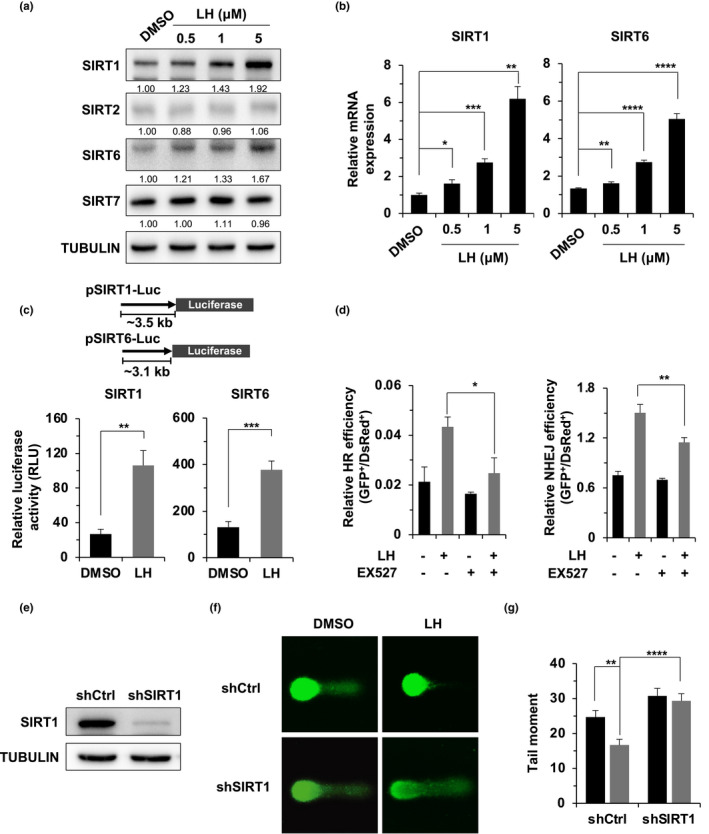FIGURE 4.

The enhancement of DSB repair and genomic stability by lycorine hydrochloride is dependent on SIRT1. (a) Lycorine hydrochloride stimulated the protein expression of SIRT1 and SIRT6. HCA2 fibroblasts were treated with the indicated concentrations of lycorine hydrochloride for 48 h, and the expression levels of SIRT1, SIRT2, SIRT6, and SIRT7 were analyzed by Western blotting. (b) Lycorine hydrochloride promoted the mRNA expression levels of SIRT1 and SIRT6. HCA2 cells were treated with lycorine hydrochloride at the indicated concentrations for 48 h, and the cells were collected for mRNA expression analysis with quantitative RT‐PCR. (c) Lycorine hydrochloride promotes the mRNA expression levels of SIRT1 and SIRT6 by activating promoter activity. HCA2 cells were treated with lycorine hydrochloride at a concentration of 1 μM one day before transfection with the luciferase reporter or pEGFP‐N1. Relative luciferase activity was measured by the ratio of luciferase activity versus the percentage of GFP+ cells. (d) EX527 partially abolished the lycorine hydrochloride‐mediated stimulation of DSB repair by HR and NHEJ. (e) Western blot analysis of HCA2‐hTERT cells with a stably integrated shRNA vector against the SIRT1 gene to verify SIRT1 depletion. (f) Representative images of the alkaline comet assay used for the analysis of the genomic stability of the SIRT1‐depleted cells, which were treated with 1 μM lycorine hydrochloride for 24 h before the comet assay. (g) Quantification of the tail moment from at least 50 cells. Error bars represent SD. *p < 0.05, **p < 0.01, ***p < 0.005, ****p < 0.001, t test. All experiments were repeated at least three times. LH, lycorine hydrochloride.
